
BPM Helps CIOs Tackle the Challenge of Change
 BPM Helps CIOs Tackle the Challenge of Change
BPM Helps CIOs Tackle the Challenge of Change
Many organizations still manage business processes with traditional products such as Word, PowerPoint and Excel, which leaves a lot of room for improvement.
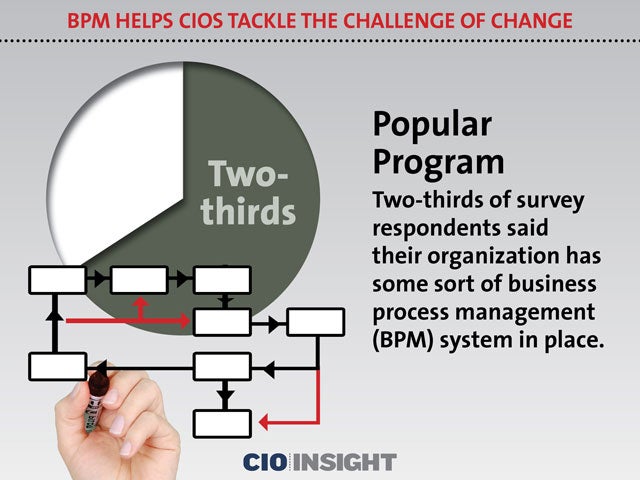 Popular Program
Popular Program
Two-thirds of survey respondents said their organization has some sort of business process management (BPM) system in place.
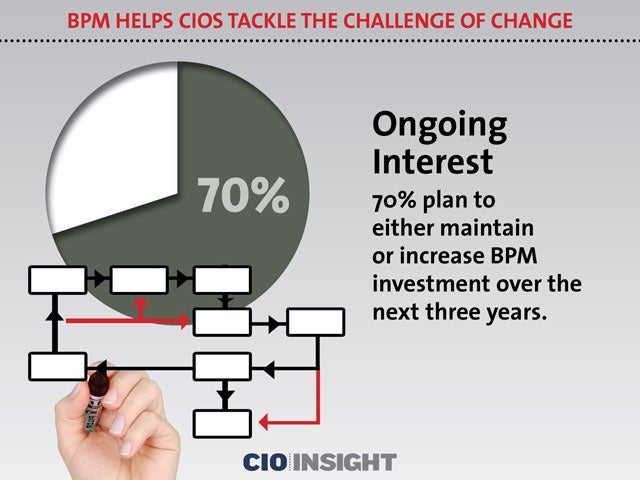 Ongoing Interest
Ongoing Interest
70% plan to either maintain or increase BPM investment over the next three years.
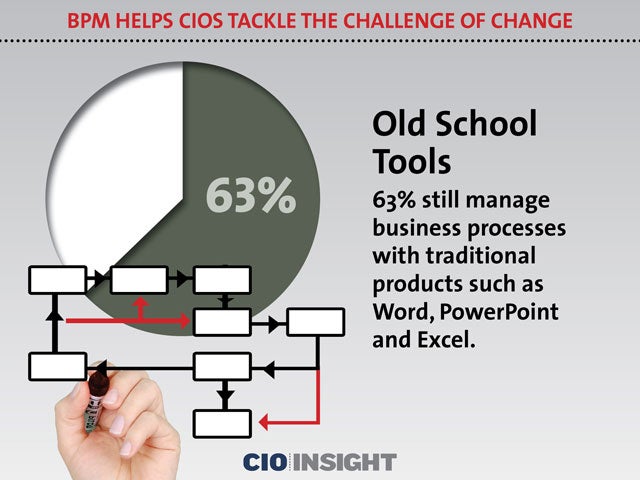 Old School Tools
Old School Tools
63% still manage business processes with traditional products such as Word, PowerPoint and Excel.
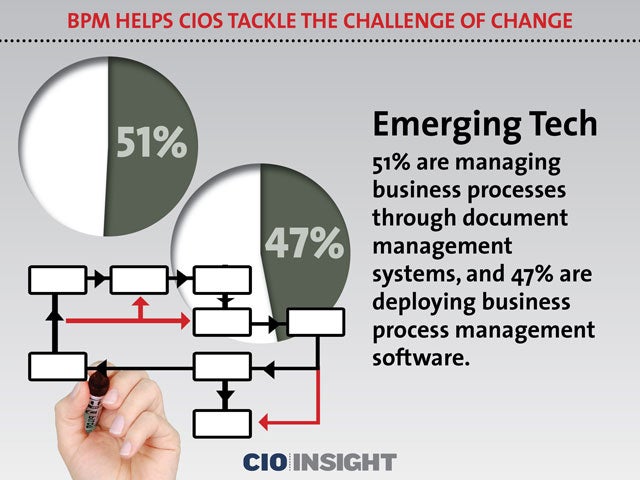 Emerging Tech
Emerging Tech
51% are managing business processes through document management systems, and 47% are deploying business process management software.
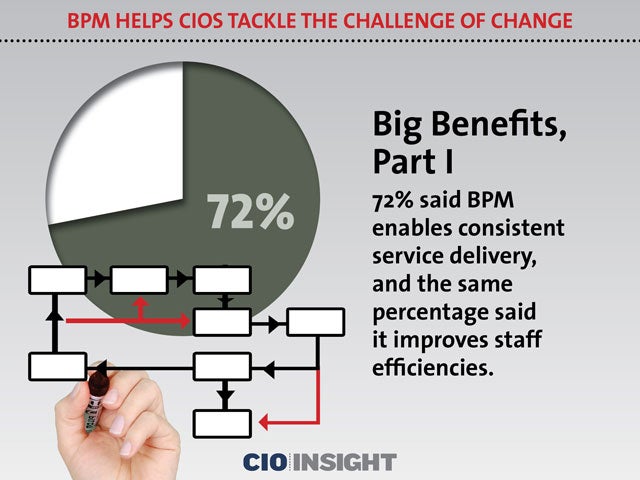 Big Benefits, Part I
Big Benefits, Part I
72% said BPM enables consistent service delivery, and the same percentage said it improves staff efficiencies.
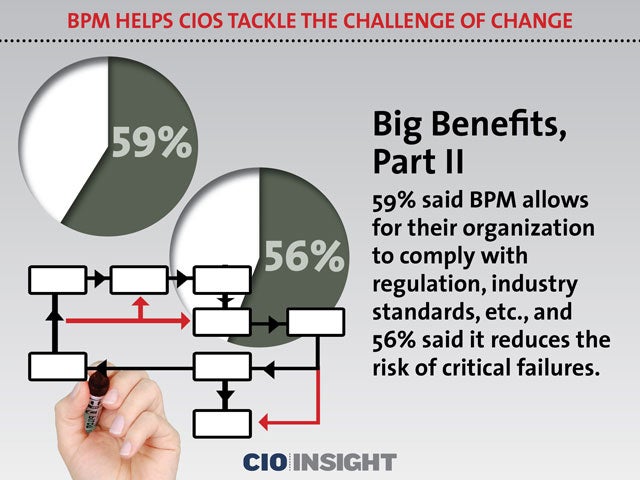 Big Benefits, Part II
Big Benefits, Part II
59% said BPM allows for their organization to comply with regulation, industry standards, etc., and 56% said it reduces the risk of critical failures.
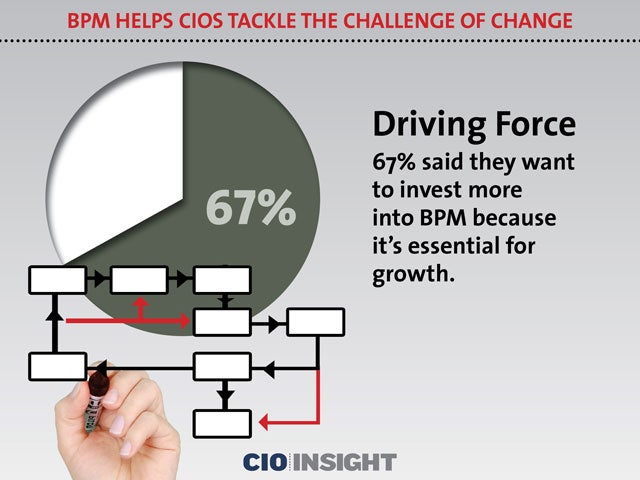 Driving Force
Driving Force
67% said they want to invest more into BPM because it’s essential for growth.
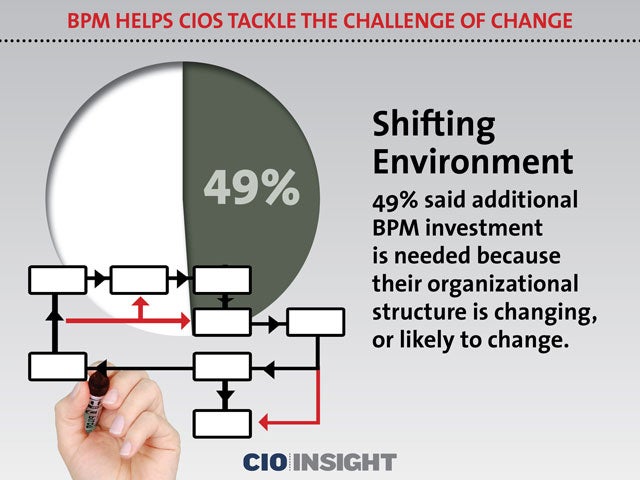 Shifting Environment
Shifting Environment
49% said additional BPM investment is needed because their organizational structure is changing, or likely to change.
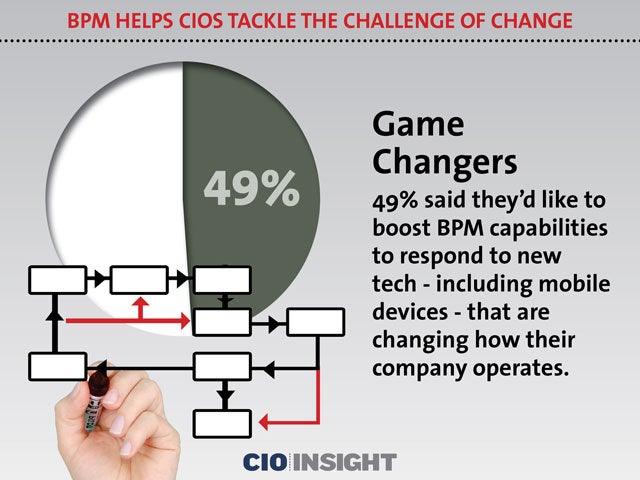 Game Changers
Game Changers
49% said they’d like to boost BPM capabilities to respond to new tech – including mobile devices – that are changing how their company operates.
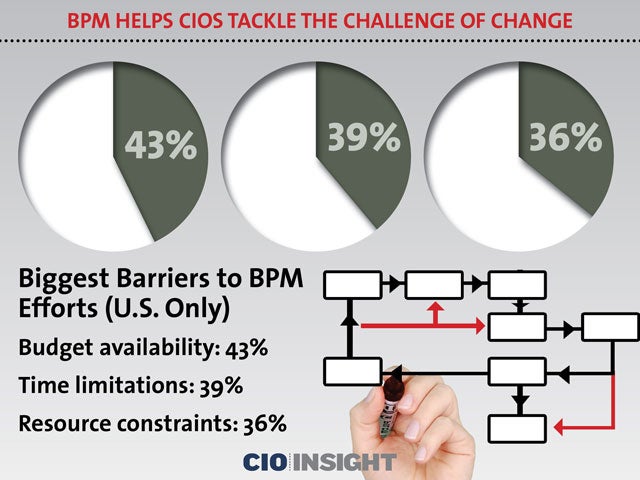 Biggest Barriers to BPM Efforts (U.S. Only)
Biggest Barriers to BPM Efforts (U.S. Only)
Budget availability: 43%, Time limitations: 39% Resource constraints: 36%